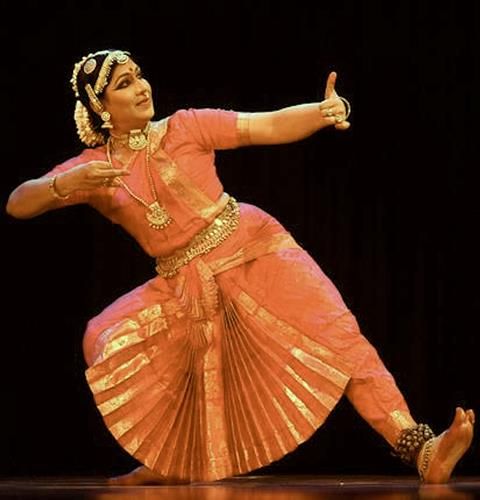Dancing Into View: Narthaki Nataraj's Rise to Stardom
In April 2016 Scroll India article, "On World Dance Day, meet the transgender superstar of Bharatanatyam" by Veejay Sai, World Dance Day is commemorated with a profile of Narthaki Nataraj, a trans woman who has become a superstar of classical Indian dance.
Bharatanatyam is one of India’s oldest and most revered forms of dance, originating in the temples and royal courts of the Tamil Nadu region and steeped in history as a dance style, a storytelling tradition, and a form of religious offering.
The history of Tamil Nadu also includes the reverence of those of the third gender -- known in Tamil as Aravani or Thirunangai* -- especially as the Veerashaiva movement began to appear in South India during the 12th century, as described in the article:
The Veerashaivas were challenging Brahminical orthodoxy and Vedic appropriation of rituals. Caste and gender hierarchies were being disrupted, and the transgender community occupied an exalted position in society.
By the 14th century, in another part of the country, transgender people were well integrated into society. In Tamil Nadu they were considered auspicious at ceremonies, and exquisite stone sculptures honoured them.
During British colonization, third gender individuals lost all social standing and become marginalized, disadvantaged, and scorned. Only in 2014, did India’s Supreme Court give hijras and other third gender people recognition and protections under the law.
Narthaki Nataraj was born in Madurai in 1964 and left home at the age of 12 due to social insensitivity. Nataraj fell in love with dance at a young age, and continued to attend events and festivals, even after being left to take menial jobs and live on the streets.
She was determined to find a guru to learn dance and musicality from, and found no better teacher than Kittappa Pillai of the legendary Thanjavur lineage, whose predecessors codified Bharatanatyam and trained hundreds of temple and royal dancers centuries before, and who gave her the name Narthaki.
Bharatanatyam was (and still is) predominantly studied and performed by cisgender women and is known for the code of desired traits its performers should ideally have:
Bharatanatyam, meanwhile, remained the reserve of women – its language, content and form designed solely for the female body. It was only when the form went from the hands of temple practitioners into the hands of the upper caste elite in the 20th century did it get reconstructed. Finally, male performers were accepted, though they had to continue dancing to lyrics written in the female voice for a while.
Nataraj trained under Pillai for 15 years, who also taught her rare pieces from the body of knowledge in the Thanjavur tradition, making her one of the few dancers in possession of that repertoire. She became Pillai’s research assistant during his work with the Tanjore Tamil University, and was the featured dancer in the Sangeet Natak Akademi documentary on Kittappa Pillai’s life.
Despite enduring derision and rejection, Nataraj continued perfecting her art and eventually started her own dance school, going on later to win prestigious awards:
The dance community had to accept Nataraj. Though many conservatives sniggered at her, Sabha secretaries mocked her and the Bharatanatyam establishment kept ignoring her, she grew steadily into a fabulous performer. She even established her own dance school Velliyambalam Nadana Kalaikoodam in Chennai and Madurai. In 2007, the government of Tamil Nadu honoured her with the Kalaimamani award. And four years later, she was honoured with the prestigious Sangeet Natak Akademi award from the President of India, a first for any transgender [person].
Narthaki Nataraj is still performing, specializing in widening her repertoire through Tamil literature, and is currently researching the history of hijra in Tamil poetry and literature.
Read On World Dance Day, meet the transgender superstar of Bharatanatyam by Veejay Sai.
Watch a video of her dancing below.
*There are many different terms for transgender women in India: hijra, aravani, and many others. In attempting to keep with Narthaki Nataraj’s place of origin, I have included the term Thirunangai as a preferred term in the Tamil language, according to Gopi Shankar. ~ Transfaith Editors

